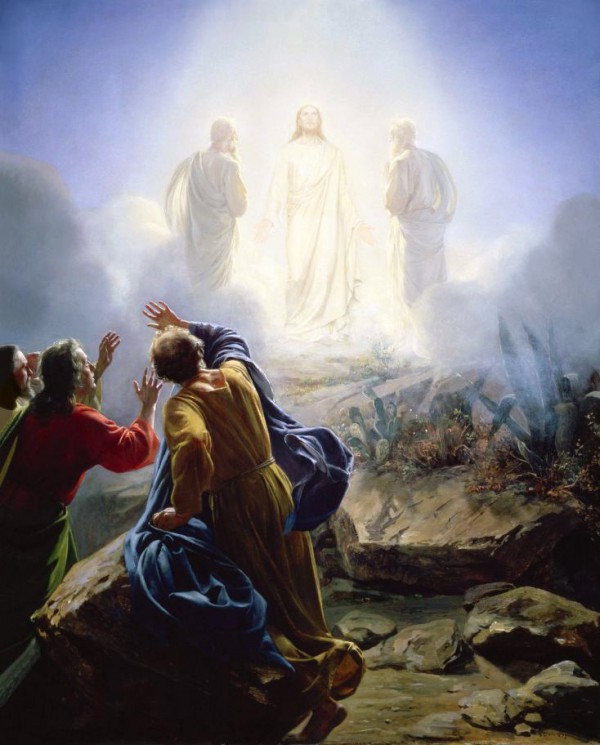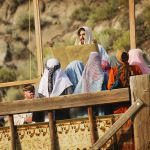There may be nothing more Jewish than the idea that “in the beginning was the Word.”
It is hard to fathom and, yet, that Word walked among us, both subject to God and worshipped as God. How did the Jewish Believers in Yeshua’s (Jesus’) time understand this mysterious Messianic truth?
The answer will encourage you in your faith and equip you to share that faith with others in a new and profound way.
How Do You Explain God?
If you were asked: “How could the infinite Creator of the Universe who exists beyond all dimensions of our finite existence walk among His creation, make covenants with them, appear to them in clouds and fire, go to battle for them, bless them, curse them, and redeem them?”
What would you say?
The ancient Jewish sages pondered the same question and answered, “The Memra.”
Memra is an Aramaic term related to the Hebrew word, (אמר), pronounced amair, which means word, decree, or speech. Sometimes, the Hebrew word (דבר), pronounced debair, is used instead of memra, which also means word, as well as matter, thing, and issue.
More than just the words of our Creator God (YHVH), Memra (and sometimes Dibber) convey God’s many manifestations and expressions in His creation through His Words.
The Jewish People became intimately familiar with the Memra as the Word of the Lord because they heard about it hundreds of times in the synagogues.

Reading a Torah scroll during a bar mitzvah ceremony with a traditional yad pointing towards the text on the parchment.
When the Israelites returned from their exile in Babylon in the 6th century BC, most of them no longer spoke Hebrew; they spoke Aramaic. Nevertheless, the Scriptures have always been read in Hebrew even if no one in the greater community could speak it.
Something had to be done so that the people would understand God and His Word. The sages again found an answer.
After hearing a priest read a few verses of the Torah scroll in Hebrew, they then heard a translation in Aramaic called a Targum, which simply means translation.
In those Targums, we find the Memra.

Page from a Hebrew Bible (AD 1299) with Targum Onkelos (an Aramaic translation written ca. AD 35–120). (Source: Wikipedia)
In the Beginning Was the Memra (Word)
“In the beginning, God created the heavens and the earth,” says Genesis 1:1.
However, in the translations of this verse to Aramaic, the Jewish People learned that God had a helper of sorts:
“From the beginning with wisdom the Memra (Word) of the Lord created and perfected the heavens and the earth … And the Memra (Word) of the LORD said, ‘Let there be light’; and there was light by His Memra (Word). A (Genesis 1:1–3; Targum Neofiti)
In this Targum, the Word or Memra is doing, being, and acting as God and yet we see that he is also with God, a distinct essence apart from Him.
In fact, the Memra is the one who rested after all his work:
“On the seventh day, the Memra of the LORD completed his work which he had created, and there was Sabbath.” (Genesis 2:3; Targum Neofiti)
The Apostle John grabbed hold of this very Jewish understanding of the Memra (Word of the LORD) to introduce Messiah Yeshua, who is God and yet a distinct essence apart from God. He writes:
“In the beginning was the Memra (Word), and the Memra (Word) was with God, and the Memra (Word) was God. He was in the beginning with God. All things came into being through him, and without him not one thing came into being.” (John 1:1–3)
John is telling Jewish readers that Yeshua as the Word of God is responsible for bringing forth life from the very beginning of our world. But John doesn’t stop there. He reveals even deeper truths about this Word using the Jewish understanding of light.

A Yemenite Jew reads from a siddur (Jewish prayer book) in Jerusalem with Temple Mount in background
The Memra (Word) Is Life and Light
“In Him was life, and that life was the light of men.” (John 1:4)
In a Hebrew poem called “The Four Nights,” the Targums write that on the First Night of creation, when darkness spread over the surface of the deep, “the Memra/Word of the LORD shone and gave light.” (fragmentary Targums P & V)
In other words, the Word of the LORD not only created light, it is Light itself.
This poem was part of the Passover liturgy among many of the Jews living in and around Jerusalem at the time, so when John refers to the Word as light, he is reminding them that the Light of this Word is so powerful, not even the darkness of space could overcome it.
As we follow the Light into the book of Exodus, we see the Memra (Word of the LORD) lighting up the night for the Israelites in a pillar of fire, leading them to safety.
At the same time, the Memra (Word of the LORD) also remained in the cloud, keeping them in darkness. (Exodus 13:21–22, 14:19–20, 23–25)
In a form the Israelites could finally see and understand, the darkness (Egyptians) could not overcome the light (Israelites and the Word of the LORD).
The Jewish People could finally see how Light and God’s salvation from darkness were inseparable.

Scene from Prince of Egypt, depicting a pillar of fire lighting up the sky for the Israelites while also holding back the Egyptians. (YouTube capture; fair use)
As we move through the wilderness into the rise of kings, rebukes of prophets, and the exile of Israel, darkness seemed to loom the earth for the Jewish People once more.
At a moment of deep oppression under the authority of a foreign power, the Light of God’s salvation again entered our finite world; this time, in a form we could talk to, walk with, and learn from:
“For to us a Child is born, to us a Son is given; and the government shall be upon His Shoulder, and His Name shall be called Wonderful Counselor, Mighty God, Everlasting Father, Prince of Peace.” (Isaiah 9:6)

“She wrapped him in cloths and placed him in a manger, because there was no guest room available for them” (Luke 2:7)
The Memra (Word) Lived Among Us
“The [Memra] Word became flesh and lived among us.” (John 1:14)
Israel not only lived under earthly darkness of Roman rule, they lived in spiritual darkness of their own sins. To save them from that spiritual oppression, “the true Light that gives light to everyone” came into the world, freely offering it to anyone who accepted it.
“My light will shine for you just a little longer,” Yeshua said. “Walk in the Light while you can, so the darkness will not overtake you. (John 12:35; see also John 8:12, 12:46)
Sadly, even when the Light walked among them, too many “loved darkness instead of light.” (John 1:11, 3:19)
Still, Yeshua pleaded with them, “Believe in the Light, so that you may become Children of Light.” (John 12:36)
Children of Light don’t stumble and fall on the dark path through the woods of anger, jealousy, deceit, greed, gossip, and all those deeds that lead us away from entering God’s Kingdom (1 Corinthians 6:9).
Children of Light walk upright, on the path that is brightly lit by the Word of God Himself. That path leads straight into our Father’s house.
Yeshua “came to His own creation,” seeking sinners who would repent and enter the Light of God’s Kingdom with Him. “Yet His own people did not receive Him.” (John 1:11)
The Memra (Word) Is the Door to Salvation
The One who saves people out of eternal darkness into the light of eternal life has always been the Memra—the Word.
In the targums, God established His covenant between Abraham and the Memra (Word). (Genesis 9:12–15, Targums Onkelos and Palestine)
And Abraham believed in the name of the Memra (Word of the LORD), and the LORD counted it to Him as righteousness. (Genesis 15:6, Targum Neofiti)
This Divine power of the Memra to save someone from the eternal darkness of their sins is not a new concept for the Jewish People.
This Targum says the Memra would be thought of as a deity:
“My Memra (Word) shall be unto you for a redeeming deity, and you shall be unto My Name a holy people.” (Targum Yer. to Lev. xxii. 12, as quoted in Jewish Encyclopedia).
If there is still any doubt who this redeemer deity is, one Targum written 200–600 years after Yeshua gives us a striking clue:
“When the Word of the LORD (Memra) shall be revealed to redeem his people, he shall say to all the nations, ‘See now that I am he who is and was, and I am he who will be in the future.…’ and he, by his Word (Memra), will make atonement for the sins of his land and of his people.’” (Deuteronomy 32:39, 43; Targum Pseudo Jonathan)
Throughout the Gospel of John, Yeshua gives more than clues about His identity as the saving Word that would atone for the sins of the people.
He tells us that He is the Way, the Truth, the Life, the Gate, the Door, the Shepherd, the Light. (John 8:12, 10:9, 10:11, 14:6)
He says that He is the One who is and was and will be—“Before Abraham was, I AM.” (John 8:58)
“As long as I am in the world, I am the Light of the world,” Yeshua said, as He brought forth light to a blind man (John 9).
Yeshua is still offering His healing light to the Jewish People so that they can see Him for who He really is—their long-awaited Messiah, their atonement, their redeemer.
It is our privilege to continue the work that the Apostle John so valiantly began and share the identity of the Light, the Word, the Memra that was with God and is God—Yeshua—with the Jewish People.














